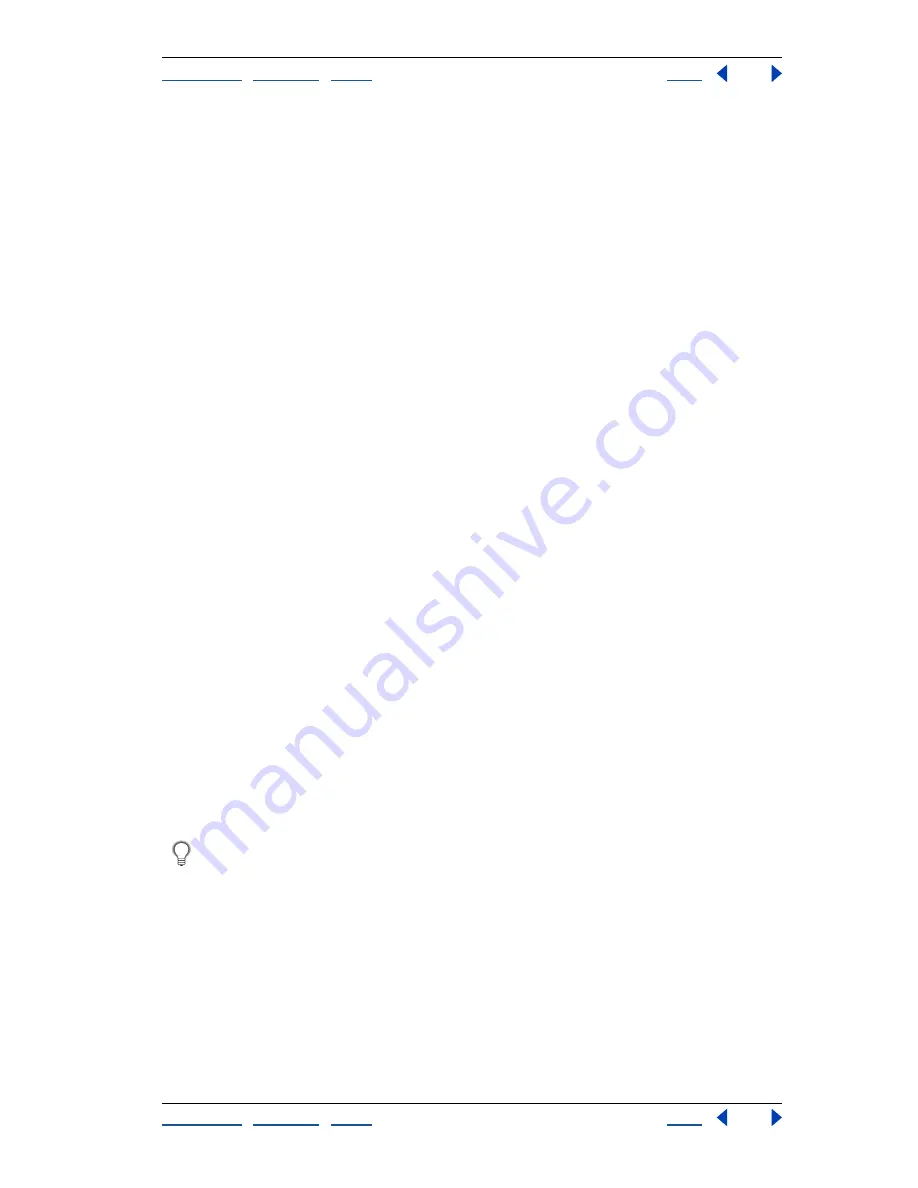
Using Help
|
Contents
|
Index
Back
442
Adobe Photoshop Help
Preparing Graphics for the Web
Using Help
|
Contents
|
Index
Back
442
Setting output options
When you save an optimized image as a Web page, you can specify how HTML files are
formatted, how slices are named, how files are named, and how background images are
handled. You set these options in the Output Settings dialog box.
Using the Output Settings dialog box
The Output Settings dialog box displays different sets of options. In ImageReady, you can
save your output settings and apply them to other files.
Displaying the Output Settings dialog box
Do one of the following:
•
When you save an optimized image, choose Other from the Settings pop-up menu in
the Save Optimized or Save Optimized As dialog box. The Save and Load options are
not available when you use this method to access the Output Settings dialog box.
•
(ImageReady) Choose the desired preferences set from the File > Output Settings
submenu. Use this method if you want to load and save settings.
•
(Photoshop) Choose Edit Output Settings from the Optimize pop-up menu in the Save
For Web dialog box. Use this method if you want to load and save settings.
Displaying predefined output options
Choose an option from the Settings pop-up
menu.
Switching to a different set of options
Choose an options set from the pop-up menu
below the Settings menu. Alternately, click Next to display the next set in the menu list;
click Prev to display the previous set.
Saving output settings
Set the options as desired, and click Save. Type a filename,
choose a location for the saved file, and click Save.
You can save the output settings anywhere. However, if you place the file in the Presets/
Optimized Output Settings folder inside the Photoshop program folder, the file will
appear in the Settings pop-up menu in both Photoshop and ImageReady.
Loading output settings
Click Load, select a file, and click Open.
Setting HTML output options
You can set the following options in the HTML set:
Tags Case
Specifies the capitalization for tags.
Attribute Case
Specifies the capitalization for attributes.
Setting tags and attributes to all uppercase helps the code stand out in the file.
Indent
Specifies a method for indenting lines of code: using the authoring application’s
tab settings, using a specified number of spaces, or using no indentation.
Line Endings
Specifies a platform for line ending compatibility.
Include Comments
Adds explanatory comments to the HTML code. In ImageReady, this
option is required when you plan to update the resulting file using the File > Update HTML
command.






























